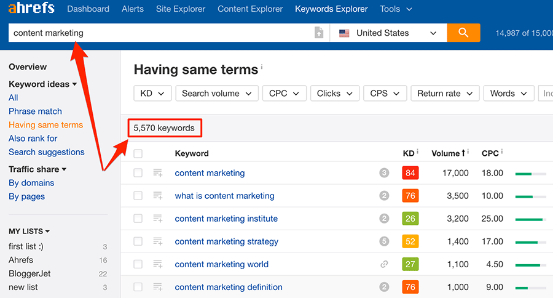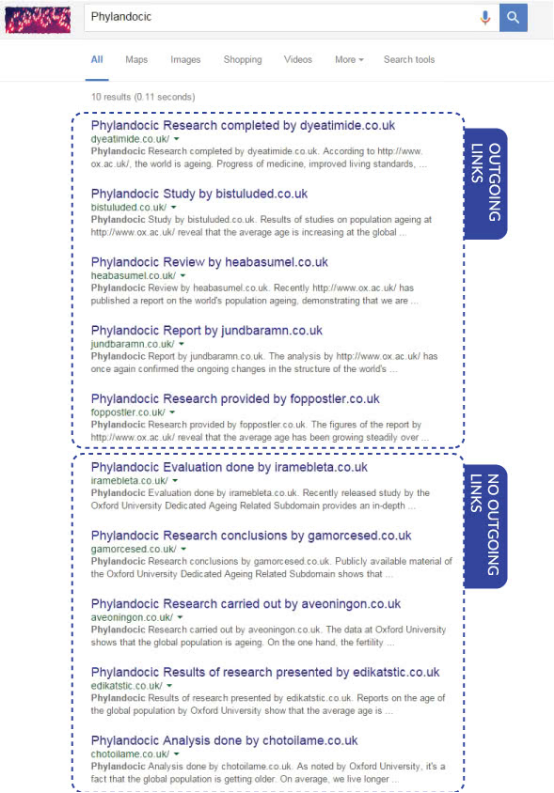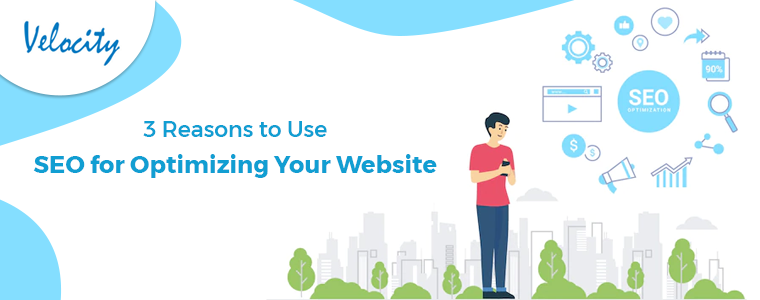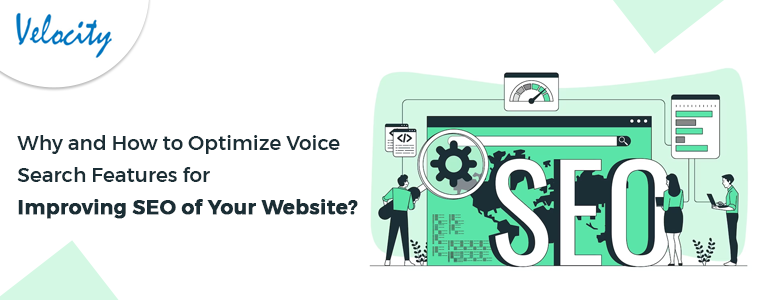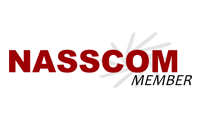Do you want your website to rank in the top position in the Google’s SERPs?
That’s a dream for every eCommerce marketer and in order to attain your dream, you do all kinds of things that includes applying different SEO strategies, avoid the mistakes and more. Indeed, Search Engine Optimization has changed the face of the eCommerce industry and consistently been evolving trying to make your website and its content worthy. Optimization for different search engines like Google, Yahoo, and Bing serves to be very beneficial when it comes to bringing traffic to your website.
However, SEO techniques have changed in the last decade and now you cannot just have a website and make it work or invest in sneaky techniques to make it work. Now, if you want more traffic on your website, more leads and enhanced sales, you have to work your heart out keeping in mind the different Google Algorithms and their updates.
We have already talked a lot about the SEO tips that you should adopt right now, but as we mentioned, SEO is something that keeps on changing and evolving.
A good keyword should be your focus
It was approximately a few years back when you could just pick the random keywords and your website would be displayed in the search results. However, after Google’s Hummingbird, the websites were expected to interpret search queries and display results that would correlate to the user’s request. Moreover, if you want your website to rank better, you need to use relevant keywords or keyword variants that are most likely to be searched by the users. You can read more about Google Hummingbird here.
Picture credit: ahrefs
According to the above example, you can easily find the keyword density (KD), search volume and a lot of other information that you can use in your content.
Another thing that you should be careful about when it comes to using keywords in your content is the long tail keywords. According to WordStream, long tail keywords help you connect with your customers in a better way, which as result, leads your website in a progressive way. As per Google, the search queries have changed over the last few years. The shoppers tend to search for queries instead of just keywords. For instance, the search volume of queries such as “Top 5 Chinese Restaurants”, “Best Smartphone” or “Grocery shop near me” has increased marginally. Thus, instead of just focusing on the keywords, make sure that you include the such queries in the content.
1. Invest in faster loading website
Page load time is an important factor. It was ages ago when you had to wait for the whole website to load in order to view the images in the content (which make a lot of difference). Gone are those days and now, if your website doesn’t load within seconds, you lose. According to MachMetrics, the average time for a website to fully load is 22 seconds. On the contrary, about 53% of people would quit if the website takes longer than 3 seconds.
Neil Patel also states the effects of loading time in his blog and states that a second delay in the page response leads to a 7% reduction in conversions.
In Jan 2018, Google has announced that page speed will be a ranking factor and they are going to launch a page speed update in July 2018. Google has started to roll out the Google Speed Update on 9th July.
https://www.seroundtable.com/google-speed-update-rolling-out-26017.html
You should get rid of the unnecessary aspects available on your website that slows down the loading speed. They can be anything from large images, flash graphics, irrelevant plugins and more.
2. Include related content while providing link to another website
Rand Fishkin of Moz, stated, “Linking is common practice on the web – expected and respected by users of all kinds – and therefore, extremely unlikely to harm your reputation.”
According to Ascend2, 46% of marketing influencers find link building as an effective SEO technique. In the same survey, 52% of marketing influencers find link building is considered to be the most difficult SEO tactic to implement.
Link building is an integral part of SEO practices and has been widely adopted by eCommerce marketers throughout the world. In a study done by Reboot, “Outgoing relevant links to authoritative sites are considered in the algorithms and do have a positive impact on rankings.” After the creation of a fake name and check its availability in the SERPs, the study was conducted and after working on it for 5 months, the results are as follows:
Picture credit: Reboot
You might think that the outbound links direct the users to another website but you should look at the different, more positive aspect of the outbound links. If you make sure that the content is relevant and visitors are clicking on the links, it directly tells the search engines that you are a credible website and a trusted authority on a particular topic.
3. Let other credible websites link to you
Backlinks have been an integral part of websites for a very long time. Getting backlinks from sites with high domain authority might be difficult for the e-marketers. One of the best ways to achieve these backlinks is to write high-quality contents that other websites find valuable and link to you. Guest posting is a great way to start with when backlinks are all that’s there on your mind. Groins Writer lays down quite well how guest posting can help your website grow.
Rather than asking the other websites to provide you backlinks, you can invest all that time and energy in creating usefully authoritative content that the other websites would be interested in.
In 2018, influence marketing is breaking all the stereotype about link building and has become one of the most transparent and advance technique. There are many tools for offering their services such as TweetReach, Traackr, BuzzSumo and more which might be helpful for you.
4. Content is for the users – search engines come in later
If you take a look at the SERPs, you’ll be able to find websites striving their way in the top rankings with quality content with targeted keywords. Many bloggers have been trying their best to make their way up there by writing like robots and writing for the search engines. However, that’s where they take things wrong. Search engines give priority to the useful content that serves the needs of the users looking for answers to their questions.
You might want to know the hacks for bloggers which may help you streamline your focus on the content. Rand Fishkin mentioned, “Those who do not learn from history are doomed to repeat its mistakes” in his blog that puts down the steps to write for SEO in 2018. You might be writing regular content for the website, but what makes the difference here is – is it amazing? Are the readers benefiting from them? And so many other questions.
When you write a content, make sure you refer to this inverted pyramid that states the level of importance you should give to your content.
Picture credit: UP
You can even keep in mind these few things when you write for SEO:
The content is about your audience, knowing them would help you write focused content. Just write from the audience point of view.
Scannable content works well because no reader would want to read the entire content. If you highlight the key points, use bullets points, incorporate subheadings, sub headings, quotes and more would be beneficial.
Active voice works better than the passive voice.
Make use of images, videos, graphs, pie charts, and more to make it more interesting.
5. Incorporate keywords in the images
Someone rightly said, “a picture says a 1000 words”.
If you have a blog section where you believe in using useful images, make sure you put keywords in the name and the alt-tag of your images.
In this blog by Hubspot, it was mentioned that 51% of B2B marketers prioritized creating visual content whereas; 55% of B2C marketers pressed on the importance of visual content.
Picture credit: Hubspot
The “alt tag” is something you designate after you upload the photo to your website. Simply put, it is the name displayed on the web browser when you have already uploaded the image and it would also display the name when, for some reason, you are not able to load the image. On the other hand, The alt tag of the image indicate Google bot about the image. Google show image in search results on the basis of their alt tags. So, you should use your targeted keywords in alt tags to improve image search.
For example, you can re-title the file name to how-to-get-backlinks from xxx.jpeg because that’s what you want your readers to find when they are are looking for backlinks.
6. Make way for Web Analytics in the beginning
Every website has SEO strategies planned from the beginning itself. You must work on building the strategies that are not rigid but flexible enough to accept changes with the enforcing factors. Web Analytics software like Google Analytics, Google Search Console, and others provide your website’s performance report including aspects like – the traffic, the bounce rate, conversion rate, page speed on the website, where is the traffic coming from and much more. Tracking of the website is an ongoing thing that continues as the users are scrolling, clicking and spending time on your website.
Having MockingFish heatmap tool, you’d be able to track the behavior of users and make alterations in your SEO strategies to take the website towards the progressive growth.
7. Meta Tags should be distinctive
Duplicate meta tags are one of the most prominent SEO errors that you should avoid in your eCommerce sites. The search engines are at war with the websites that take the wrong path by using duplicate/same meta tags for multiple pages.
Meta Description: A meta description is a short description mentioned below the link in the search results.
Picture credit: Fahrenheit Marketing
Having a duplicate meta description is not banished entirely and can be used under some circumstances including:
You are looking forward to using the meta description temporarily; and
You have webpages with original contents.
Except for these reasons, leaving the meta description box blank would be considered better rather than duplicating the description. This article by Yoast lets you fix the duplicate meta descriptions.
Picture credit: WeblinkIndia
8. Readable URLs are a must
When it comes to your website, your customers and Google would notice the URLs first. A good URL is considered to be the building block of an effective website. An example of a good website URL would look like this:
https://www.velsof.com/blog/ecommerce/the-8-best-online-marketplaces-to-sell-in-2018
On the contrary, a poor would look something like this:
http://www.example.com/12345678 (just an example)
If you are looking forward to creating a good URL for your webpage, you can do with the help of these steps:
Make use of the keywords in the URL. For example:
https://www.velsof.com/blog/ecommerce/the-8-best-online-marketplaces-to-sell-in-2018
Keep the hierarchy in mind. You cannot go from domain to subcategory just like that. Make sure you go with the flow like:
Domain/category/subcategory/and more
For example:
https://www.velsof.com/blog/category/search-engine-optimization
Abstain from using abounding words or characters. For example:
http://www.example.com/flowers/rose-flowers/rose-flowers-colors (just an example)
Use the right canonical tags. Apply canonical to the webpages that you don’t want to be crawled.
Conclusion:
SEO is a practice that is continuous and brings effective results if you are practicing the right tactics. These SEO tips are a beneficial source for you to optimize your website accordingly and bear the fruits of your hard work.

